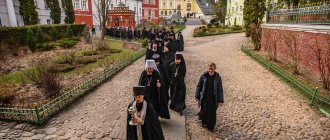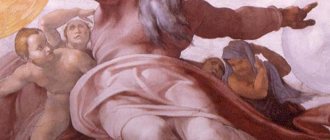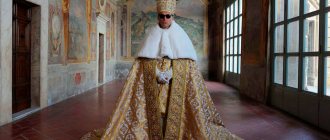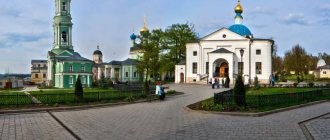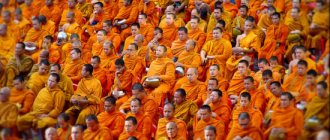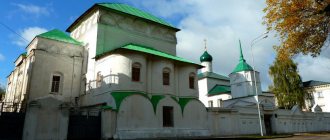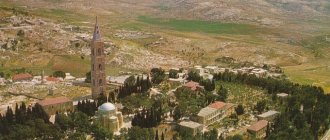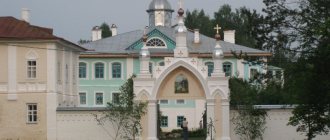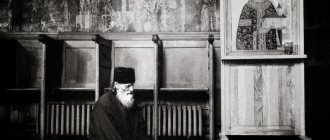Monasteries were often built in places inaccessible to humans, far from cities and towns. Monks who wanted to separate themselves from worldly life felt in such places of peace and solitude as close to God as possible. Some of these places require much more than determination to reach them. Some of them seem completely inaccessible. The idea is to deter all but the most determined pilgrims from visiting these holy sites. Nowadays, these monasteries have ceased to be places of solitude - they are very popular tourist attractions. For the convenience of tourists, stairs and cable cars were built, which made these historical monuments much more accessible. The monasteries still look very formidable and are not easy to get to. So anyone who wants to visit one of these attractions needs to be patient and have comfortable shoes.
Ostrog, Montenegro
The monastery is located high in the mountains, in the Ostroshka Greda rock. The Orthodox Church is one of the most visited places in Montenegro; several thousand tourists come here every year. Metropolitan Basil of Ostrog of Herzegovina founded it in the 17th century. The monastery is visited by a huge number of people because they believe that if you pray next to the metropolitan’s body, all illnesses and adversities will go away.
Meteora, Greece
Meteora is located on sandstone, in the mountains of Thessaly, in central Greece. Meteora is an Orthodox church, but more importantly a UNESCO World Heritage Site with perhaps the most amazing history. As legend has it, the monastery was founded by St. Athanasius. In order to plant his flag on the top of the mountain, he did not need to walk; an eagle carried him to the mind-boggling height.
Visitors can only reach the summit via a staircase carved into the rock. Until 1920, people climbed up using ropes and pulleys, and in the 14th century, when the temple was already built, in order to transport anything to a height of 550 m, loops and nets had to be lowered down. This place is also popular for its presence in the James Bond film For Your Eyes Only.
Kozheozersky Monastery
The Kozheozersky Orthodox monastery is located in the most remote part of the world, next to Lake Kozhozero, in northwestern Russia. Founded in 1500. It is very difficult to get to the temple, as there is no road leading here. Those who want to visit such a remote place will first have a train ride, and after disembarking at the Nimenga station, another trip, this time by car, through the forest (if, of course, you can catch it or have to walk).
Well, in the end, you will need to walk 32 km. But even after such a long journey, the last obstacle must be overcome - the lake. A boat will transport you to the other shore; you just need to light a flame and wait. Of course, you should forget about electricity and the Internet while visiting the monastery. So before the trip, it is better to tell your family where you are going.
Crimean expert
There are places in Crimea that even native Crimeans know about only by hearsay. One of these places is the Kiziltash tract, lost in the wooded mountains between Sudak and Koktebel.
Tough Milestones
Once upon a time, when Taurica became one of the places of concentration of medieval Orthodoxy, when many persecuted icon-worshipping monks moved here from the center of the Byzantine Empire, St. Archbishop Stephen lived in Surozh. Here, in a mountain ravine, at the foot of a high cliff of red limestone (“Kizil-tash” in Turkic “red stone”) was the summer residence of Archbishop Stephen of Sourozh. Centuries passed, the Kiziltasha district was no different from other parts of the now Muslim Crimea... But one day, in 1825, an event happened here that forever changed the fate of this area and involved it in a number of historical cycles.
One of the local Tatars was herding sheep here and decided to hide from the heat in a grotto, in the depths of which a small well was dug into the rock. Approaching the well, he saw an old icon with the image of the Mother of God floating on its surface. An impressionable Tatar took the icon and gave it to a Greek merchant, and from there the icon ended up in the temple of Stephen of Sourozh. It must be said that at present the whereabouts of the holy icon are unknown. After the icon was found, word of the miracle quickly spread throughout the Eastern Crimea and in the Kiziltash tract, pilgrims began to flock to the grotto with the well. Soon, every year, on the day of the Dormition of the Mother of God (August 15), they began to invite priests from Sudak to serve in the cave. On this day, “up to 700 souls of people” of Bulgarian, Greek, Tatar and Russian origin gathered at the holy spring. Popular rumor almost every year provided evidence of healing with water from a miraculous spring, which most often cured eye diseases, deafness, pain in the limbs and nervous ailments. In addition, mud from the bottom of the swamp, located just below the source, was considered very useful “in treating aches and pains.” This mud was smeared on the sick members and allowed to dry, after which the pain went away. Not far from the hydrogen sulfide spring, the monks erected a small mud bath building. This gives reason to say that at the monastery there was a prototype of modern Crimean health resorts, one of the very first sanatoriums. Pilgrims began to settle near the source, and in 1853, Archbishop Innocent of Kherson and Tauride spent several days in the Kiziltash tract. Innocent is famous for his good deeds of restoring Christian shrines in Tauris; on his initiative, several monasteries and many churches arose. He also gave his blessing for the construction of a monastery in Kiziltash. And already in 1856, in the area of the healing spring, the first buildings of the monastery began to be built in the name of St. Stephen of Sourozh.
The name of one of the Crimean saints, Abbot Parthenius, who was appointed abbot of the monastery in 1858, is associated with the Kiziltash cinnamon. Parthenius was not just a good priest, he distinguished himself noticeably in both civil and military service, was an inventor, and had a significant mind. It is about such people that we can say - he was a typical passionary of the Crimean scale. Evgeny Markov wrote well about him in his “Essays on Crimea”: “He was a courageous and active owner of the Kiziltash forests.” Parthenius did not tolerate laziness and theft. And therefore he waged a tough fight with the local Tatars, who shamelessly plundered the monastery’s economy - first of all, they cut down the forest. Eventually, the confrontation reached its peak - in the fall of 1866, three Tatars from the village of Taraktash (now the village of Dachnoe near Sudak) brutally killed the abbot in the forest, and then burned his body. But God sees the barbaric atrocities, and soon the perpetrators were arrested and executed. In Soviet times, they tried to present the case of Abbot Parthenius as one of the episodes of the class struggle of the Tatar people against the tormentor landowners. Currently, the scales have fallen from people’s eyes, and none of their Christians have any doubt about the ascetic life and martyrdom of the Kiziltash abbot.
The Soviet period of history inflicted serious wounds on the monastery. In 1923, the monastery was closed, and an agricultural artel moved into its buildings; a club and a dormitory were set up in the churches. Since 1930, on the territory of Kiziltash there was a rest house for the Air Force of the Moscow Military District, which existed until 1941. The next page in the history of the monastery began on November 7, 1950. On this day, the Presidium of the Supreme Council of the RSFSR decided to organize a medium-sized mechanical engineering enterprise in the territory of the village of Krasnokamenka. Here, in a magnificently beautiful tract, in a place prayed for centuries, on the territory of a former monastery, it was decided to make one of the strategic storage facilities for Soviet nuclear weapons - ammunition for the USSR Black Sea Fleet. The construction of the town began at an accelerated pace with the help of prisoners, the work was personally supervised by Lavrentiy Beria. All buildings of the former monastery were blown up and razed to the ground. The prisoners worked both in the adits, where explosions thundered throughout the area, and on the surface. If a prisoner passed 151% of the norm, he was given credit for three days. By 1956, houses, dormitories, a kindergarten, shops, a stadium, etc. were built in the village. Residents of the village lived in the strictest secrecy - they could not invite friends and leave the village only with special passes. For reasons of secrecy, the object was called “Enterprise mailbox 105.” Residents of the town had Simferopol registration. In the mid-60s. The town was called “Feodosia-13”.
The nuclear stockpile was removed in 1992, and the veil of secrecy gradually began to fall from the town. But the military town and military unit still exist here, and in order to get to the reviving monastery, a pilgrim or tourist must do a lot of tricks so as not to run into a patrol or run into barbed wire in the forest. In 1997, the Holy Synod of the Ukrainian Orthodox Church decided to reopen the monastery in the name of St. Stephen of Sourozh, and to appoint priest Nikolai Demjanjuk as his deputy, who received the name Abbot Nikon. From that moment on, a new bright milestone began in the history of the monastery...
Road to the temple
The decision to visit the monastery has been brewing for a long time. My first memories are associated with the early 90s, when driving along the Koktebel-Sudak road, I saw a blind turn into the mountains several times. The child's gaze then caught sight of a military guardhouse, barbed wire, and military personnel carefully watching the passing vehicles. Someone said in a low voice: “This is Kiziltash, access there is closed.” The next time, in 2004, we, a group of Crimean tour operators, were brought by bus to the territory of a military camp in Krasnokamenka. We got off the bus and looked at a huge cone-shaped rock of reddish limestone. “There used to be a monastery there, now it is being restored, but it is very difficult to get in, you need to apply for passes from the military,” the guide said. After looking at the red rocks and the cave with a healing spring visible in the distance, we went back.
And then three years later, on cool May days, our group of four friends found themselves in Koktebel, and decided that we must definitely get to Kiziltash. A bus from Feodosia runs to the village of Krasnokamenka every 40 minutes; the sign on the route reads “Feodosia - Urochishche”. This very “Urochishche” is our final destination. On the bus, local all-knowing and all-seeing (apparently they were serving at a secret facility!) local old women, having extracted from us the purpose of the trip, explained the best way to get to the mountain path to the monastery. They warned not to get off at the final stop, so as not to get into conversations with special forces patrols guarding the military unit and what was left of it. The bus drove into a good military town, passed through a forested area, and soon the scout grandmothers commanded: “Get out here and along that road up the mountain.” We quickly turn off the main road and walk on the asphalt for about 5 minutes. Then, at the turn we recognized in advance, we come out onto a forest path, marked with rags and crosses painted on tree trunks. This is our road to the temple today.
The forest path becomes steeper, the step is forced to slow down, sweat appears on the forehead, despite the sky overcast with low clouds. A few efforts and the path leads to a watershed with an excellent overview of the surrounding area. Below our feet, in a wooded hollow, lies a once-secret base and a military town; in the slopes among the forest, entrances to underground adits can be discerned. And above all this bustling world rises a rocky belt of several separate red massifs - the “red stone” - Kiziltash. At the foot of the easternmost cliff, the buildings of the monastery are visible. Several neat modern one-story buildings - a temple, a house for the brethren, outbuildings. The red-tiled roofs harmonize with the overhanging red rocks and create a feeling of peace and tranquility. We peer into the opposite slope and above the monastery we see a stone staircase leading to a rocky ledge. Probably somewhere there is a sacred cave with a healing spring.
After walking along the watershed for some time, the trail sharply falls down into a ravine. An earthen slope in which steps have been carved out by a caring hand - we walk along them, realizing that in the rain it will be very slippery and unsafe. As soon as we thought about it, a fine rain began to drizzle from the sky, growing stronger every minute. I wanted to quickly get to the monastery and hide under the saving roof of the temple. I couldn’t help but think that we were walking like a real pilgrim, through rain and bad weather, going to bow to the great Crimean shrine. Suddenly, my thoughts were interrupted and brought back to harsh realities by a wall of barbed wire fencing... But our path bypassed the barbed fence and, after making a slight ascent and descent, led into a ravine, on the slope of which 50 meters above we could already see the buildings of the monastery. The rain was driving at our backs, but we no longer felt it: the goal was achieved and we, “tourist pilgrims,” stood in the monastery courtyard.
The sonorous barking of a dog tied at the entrance to the temple called a middle-aged man towards us, who introduced himself as novice Vladimir. First of all, Vladimir invited us to God’s house to hide from the rain, in a homely manner he suggested that we take off our backpacks and, at our request, told us the history of the monastery. The feeling of being inside the new temple building can be expressed in one word: “cozy.” I felt just as calm and comfortable only in the famous monastery in New Athos in Abkhazia. Both in New Athos and in Kiziltash, a genuine sincere Orthodox faith is felt, the presence of the Spirit is felt, as a reward for the suffering endured by both the first and second monasteries... Our new acquaintance Vladimir said that the temple contains parts of the relics of many famous saints in the Christian world. Here are Archbishop Innocent, Saint Luke, Patriarch Tikhon, St. Clement of Rome, Panteleimon the Healer, St. George the Victorious, the physician of Pechersk Agapit, Nestor the Chronicler, Alexander Nevsky and other Orthodox saints. Not many churches can boast so many pieces of holy relics. And above the altar hang two old military banners - banners. They are said to be over 150 years old and were once used in regimental churches as an iconostasis. And allegedly during the exodus of the White Guard, the banners were left in Crimea, almost at the behest of Wrangel himself. Kept away from the gaze of the Soviet authorities for more than 70 years, the relic now pleases the eye of any pilgrim to the Kiziltash Monastery. Having lit candles and donated to the restoration of the monastery, we asked Vladimir to show us the way to the holy cave.
Before going up to the cave with the source, you need to walk through the place where temples and monastery buildings destroyed in Soviet times once stood. They are easy to spot among bushes and trees. A well-trodden road behind modern buildings leads to a stone staircase with figured balusters and an ancient stone cross at the foot. In some ways, this staircase resembles the main entrance to a Russian noble estate. In fact, it leads to the old monastery cemetery, where the monks who gave years of their lives to this holy place found their peace. Before reaching the stairs about fifty meters, a path goes to the left to a well. There is blessed water in the well, and there is always a bucket and a metal mug nearby. There is hardly a person who does not want to drink this delicious healing holy water! We also drank some mountain water and washed our faces with pleasure. And then my gaze fell on... a Lebanese cedar tree. A few meters below the well there grows a tree that is completely unusual for the Crimea and the local plant-climatic zone. Among the oaks, hornbeam and dogwood, like a Cyclops among the Lilliputians, the Lebanese cedar stands proudly. Where is he here from? It turned out that this is the remnant of the monastery park surrounding the main temple. And here are its ruins - a few meters from the well, next to the path, you can discern the foundation of the walls and the altar of the destroyed temple. There is another natural miracle right there - an old spreading oak tree that has been living in this world for 300 years. This oak saw Archbishop Innocent, Abbot Parthenius and many others. “As you pass by this oak tree, listen, and maybe it will whisper something to you,” our guide Vladimir mysteriously addresses us, casually hugging the mighty tree trunk with his hand. We are also approaching the living guardian of these places. We touch the harsh bark, which has seen so much in our lifetime. The rain continues to drizzle and it seems as if a tear is rolling down the oak tree trunk. A tear of sorrow for the desecrated sanctity of this place. Or maybe this is a tear of joy for the revival of the old monastery?
We return to the stone stairs and from the ancient stone cross along a barely noticeable path we walk about a hundred meters to the foot of the cliff. The path turns sharply to the right and up. We climb a dangerous metal ladder, slide along an inclined path, and suddenly a spacious grotto suddenly opens up before our eyes. Joy fills the body - this is the holy cave! A puddle of water glistens in the depths of the grotto. First, a little disappointment: is this really the holy spring where hundreds of people were healed? But after a moment you understand that holiness does not depend on the beauty and size of the temple. With trepidation I lower myself before the holy spring, I think about how many souls were healed in this cave, how many people believed here in the power of the Orthodox faith and healing water. Half an hour near the “Healing Spring” passes like one minute, we notice that the rain has stopped and we need to hurry back. Walking back past the temple, we hear a dog barking in a friendly manner after us, and the words of the novice fly: “Guardian Angel on your way”...
Ivan Kovalenko
Gompa Fuktal, India
The monastery is located in the southeast of the Zanskar region, in the Himalayas. The building is carved out of rock, 3800 m high. Approximately 70 monks live here. Lama Gansem Sherab Sampo founded this extraordinary monastery in the 12th century. In addition, what is also unusual is that, being constructed from clay, brick and wood, the temple has stood for more than 100 years .
Related materials:
Biotherm | Dr. Brandt | SEPHORA COLLECTION | Bioterm | Dr. Brandt | Sephora | monastery | caves | Church | temple | Russia | attractions
Articles
- On guard of youth: anti-age new items September 01, 2014, 00:00
- Secret ingredient: clay December 17, 2015, 00:00
- Celebrity Fitness: Paul Bettany May 27, 2021, 00:00
Video
- Biotherm presents new products in the Skin Vivo line July 20, 2012, 11:00
- Beauty in Korean October 24, 2021, 12:00
- New Year's collection FROSTED PARTY from SEPHORA COLLECTION November 18, 2021, 00:00
Taktsang Lhakhang, Bhutan
Taktsang-lakhang or as it is also called “Tiger's Nest” is located in a very dangerous place, at an altitude of 3000 m, on the slope of a cliff, in the Paro Valley. According to legend, the second Buddha, Guru Rinpoche, was looking for a cave for meditation, and found it in Bhutan, where he arrived on the back of a huge tigress. In 1692, a monastery was built on the site of this very cave. In 1998 it was reconstructed. You can only get here on foot or riding a mule. Tourists are not allowed.
Taktsang Palphug Monastery, Bhutan
Taktshang Monastery, better known as the Tiger's Nest, is located on a steep cliff about 900 meters above the Paro Valley in Bhutan. The slopes of the rocks are very steep, almost vertical. The monastery building is built into the rock.
Although it looks more than impressive, the monastery complex can be approached from several directions. There is a path in the forest, from the northwest, there is a path from the south, and there is a path from the north - usually pilgrims use it. It passes through the forest and looks quite colorful: it is overgrown with moss, and the monks decorated it with prayer flags. If you are on the territory of the monastery in cloudy weather, then an indescribable feeling of separation from the whole world is created.
Xuankong-si, China
The Hanging Monastery is located in Shanxi Province, China, with a beautiful view of Mount Heng. If you look at the temple for the first time, you get the feeling that as soon as a strong wind blows, the building will immediately fall down. But, probably, God protects the monastery (or it was designed by a good engineer), because it withstood earthquakes.
The atmosphere inside the temple is quite extraordinary, because the walls in the rooms follow the contours of the rock. The building was built 1400 years ago. It is not only sustainable, but also has enormous architectural value. So how does the monastery manage to withstand wind and earthquakes? The thing is that smart engineers, while building it, drove piles into the rock from which the temple was carved.
The mystery of the abandoned Rdeisky monastery. Who founded it and why in the wilderness of the swamps
The Rdeisky Assumption Monastery is located in hard-to-reach and sparsely populated areas of the Novgorod region and now it is difficult to understand how they could build it here.
The road to the monastery goes through the vast Rdeiskoe swamp. In winter you can get here on skis (3.5 hours one way); If it's dry autumn, you can get to the monastery on foot. It is not advisable to go in spring and summer - it is damp and there are a lot of mosquitoes.
It is unknown when and by whom exactly this desert was founded among impenetrable swamps and forests, but in the 17th century there were two wooden temples in the desert, which, in all likelihood, were built on the site of previously existing buildings.
Pustyn is mentioned in the chronicle of 1666. In those days, all the buildings of the monastery, including two churches, were wooden. This temple burned down in 1700. In its place, a stone two-story temple was built with a bell tower in the name of the Dormition of the Virgin Mary, and below - in the name of the Solovetsky elders. It was consecrated in 1710. An icon of the Dormition of the Mother of God was painted especially for the temple, which contained particles of the relics of the seven holy martyrs and it became a shrine of the monastery.
M.I. Polyansky at the end of the 19th century in his “essay on the city of Staraya Russa and the Staraya Russa district” writes that “The local legend written at the foot of the Cross of Christ, which was erected by the Right Reverend Cornelius, in memory of his visit to the desert, certifies that the island of Rdeisky Apostle Andrew the First-Called personally blessed with the holy cross while he was passing from Kyiv to Novgorod and further along the Volkhov River through Lake Ladoga, to Valaam.”
However, already in 1764, in accordance with the decree on the secularization of church property, the men's Rdeysk hermitage was abolished, monastic lands were confiscated in favor of the state treasury, church property was transferred to other monasteries of the Novgorod diocese. Of the entire monastery complex, only the Church of the Assumption remained, which in 1780 was transferred to the category of parish. Later, due to its considerable distance from housing, the parish was transferred to the nearby village of Navolok.
The parish, remote from populated areas, quickly became impoverished and, in 1873, together with the Assumption Church, it was closed. However, in 1880, one of the Navolovo parishioners, A. Usinin, turned to wealthy people with a written request for a donation for the restoration of the Rdeysk Hermitage. One of the petitions fell into the hands of the merchant A.N. Mamontov, who abandoned worldly affairs due to a serious illness.
In 1880, Mamontov became a trustee of the parish church in Navolok. Already in 1883, with his assistance, the parish was transferred back to the Church of the Assumption of the former Rdeisk Hermitage.
In 1887, by decree of the Holy Synod, the monastery reopened. According to the new name, it is characterized as a women’s “everyday monastery with a school for young children.” Merchant Mamontov provided financial support to this enterprise in the amount of 6,000 rubles.
From that time on, again with the financial support of A. N. Mamontov, intensive construction began at the monastery. A description of the monastery buildings in 1890 reports that at that time on the territory of the monastery there was a stone Church of the Assumption, a wooden chapel, two-story wooden and three-story semi-stone residential buildings, some outbuildings, cellars, stables, food warehouses, woodsheds, a grain barn, a bathhouse , laundry, and carriage house.
On May 28, 1893, the Holy Synod decided to “raise” the Rdeysk women’s community into a nunnery with the name “Uspenskaya Rdeysk Cenobitic Hermitage.”
At the invitation of Mother Superior Eusevia, the Novgorod diocesan architect A. N. Dyakov arrived at the monastery in August 1896. According to his assessment, the Church of the Assumption was in disrepair. With the financial support of the merchant Mamontov, it was planned to build a stone cathedral for 750 people.
The temple was equipped with a modern steam heating system
The construction of the new Assumption Cathedral began in 1898 and was completed in 1902. The author of the project was Academician A. S. Kaminsky. Elements of different styles were used in the design of the cathedral, and the artistic expressiveness of the building was enhanced by the use of decorative forging and expensive materials. The marble iconostasis, made under the direction of the Moscow master Zakharov, was particularly rich and splendid. The temple was equipped with a modern steam heating system.
After the revolution, unrest began among the novices in the monastery. Within a short time, several abbesses were replaced. The monastery existed until 1932, but services in the cathedral continued until the end of 1937. The last rector, Hieromonk Dimitrian (Savelyev), was arrested on December 7, 1937 and executed on December 28.
Legends of the monastery
There are many legends and secrets associated with the Rdeisky Monastery.
Despite the fact that there are no holy springs around the monastery, and the purest drinking water is taken from the lake, it is believed that the Assumption Church has healing properties. Various kinds of “sensory” frames rotate in the church at incredible speed. Demons are supposedly cast out from possessed people here, and women suffering from infertility are healed of their illness.
As they say here, everyone who comes to the monastery with evil intentions does not bring good things back to their home. This also applied to those who threw down crosses, evicted nuns and turned the temple into a barnyard. Until recently, the chimney of a collective farm tractor S-80, on which a reckless driver tried to remove bricks from his sister’s cells before the war, stuck out ominously in the swamp...
During the war, the last nun, Golubushka, was brutally killed, whose surviving cell is considered holy today. The length and breadth of the peninsula was mined, and the surrounding peasants blew themselves up here every now and then, without revealing the main secret of the unbroken shrine.
Share link:
- Click here to share content on Facebook. (Opens in a new window)
- Click to share on Telegram (Opens in new window)
- Click to share on Twitter (Opens in new window)
- Click to share on WhatsApp (Opens in new window)
Sumela Monastery, Türkiye
Sumela Monastery is the oldest temple, which is already 1600 years old. It is located on the rocks of the Altinder Valley, at an altitude of 1200 m. The temple was abandoned in 1920, and today it is a museum and one of the most popular attractions in Turkey. After the closure of the Monastery, the first Orthodox mass was held in 2010. The Sumela Monastery includes chapels, a kitchen and a Stone Church.
Shumel Monastery
This ancient monastery was built in the rocks of the Altmdere Valley in Turkey. It is located at an altitude of about 1200 meters. Today there is simply no more important attraction in this area. This is the crown jewel of the local national park. The monastery was founded in 386 AD during the reign of Emperor Theodosius I (375 – 395 AD). According to local legend, two priests climbed into the mountains to pray in solitude and peace. In the cave where they stopped, the priests discovered the face of the Virgin Mary on the surface of the rock. At the place where this miraculous icon was discovered, the priests decided to erect a temple. Over its long history, the monastery was destroyed several times and restored again by various emperors. It acquired its current appearance in the 13th century. This happened when Emperor Alexios III reigned.
The monastery was completely abandoned after the First World War. He was practically forgotten. Population migration began. Millions of people left their homes and homes and returned to their historical homeland. The monastery has been empty for decades. Today, the Turkish government has partially restored this monastery, partially reconstructed it, and the historical monument has been opened to the public. And there is something to see there.
Taung Kalat Monastery on Mount Popa, Myanmar
Climbing Mount Popa, people literally have their head in the clouds. Taung Kalat, at an altitude of 737 m, is located in a truly extraordinary place - on the top of a cliff overlooking a volcano that is now dormant, but no one knows whether it was asleep when the temple was built. It is a famous pilgrimage site for Buddhists and is home to 37 Mahagiri Nats (spirits who died due to violence). But the main thing to remember is that to get to the monastery, you need to climb 777 steps, and it’s better not to eat at the top, as the macaques will still take the food.
Monastery of St. George, Israel
It’s unlikely that anyone would want to walk here in their sleep, since there is a steep cliff right next to the building. The monastery was built in the 6th century. You can reach it by crossing a foot bridge, crossing the Wadi Qelt valley. Some people claim that Wadi Qelt is the valley of shadows mentioned in Psalm 23 of the Old Testament . The monks who lived in the 4th century believed that the cave next to the temple had great spiritual significance (they believed that it was in it that the crows nursed the prophet Elijah). Be that as it may, peace did not always reign in the monastery. One day, when the building was already built, Persian marauders, driving past the valley, killed 14 monks of the monastery, in the walls of which their bones and skulls can still be seen.
VI. Small Monastery
To main
All authors
Home → Victor Hugo → Les Miserables
In the enclosure of the Petit Picpus there were three buildings, completely separate from each other - a large monastery where the nuns lived, a boarding house where the pupils lived, and, finally, the so-called small monastery. It was a building with a garden, where old nuns of different orders lived together, from monasteries devastated by the revolution; there was a motley mixture of all kinds of nuns - black, white and gray, belonging to all kinds of communities and orders of all kinds. If I may use such an expression, it was a patchwork monastery.
Since the time of the Empire, these poor destitute women were allowed to take refuge under the wing of the Benedictine Bernardines. The government gave them a small allowance; the sisters of Petit Picpus accepted them readily. There was the strangest confusion there. Each followed its own rules. Sometimes the pupils were allowed to visit them as a special entertainment; and many young heads retained memories of Mother Vasilisa, Mother Scholastica and Mother Jacob.
One of these visiting nuns was almost home. She was a nun from Saint-Or, the only one to survive her order. At the beginning of the 18th century, the former monastery of the Saint-Or sisters occupied the very same house that later belonged to the Benedictines of Martin Verti. This holy woman, too poor to wear the magnificent clothes of her order - a white dress with a purple scapular, piously decorated a mannequin with it, which she gladly showed to everyone and bequeathed it to the monastery on her deathbed. In 1824, only one nun remained from the order; Now all that's left of him is a doll.
In addition to these worthy sisters, several old secular women obtained permission from the abbess, like Madame Albertina, to retire from the world to a small monastery. Among them were Madame Beaufort Gopul and the Marquise Dufresne. Among these ladies there was one, known throughout the monastery only for her unusually sonorous blowing of her nose. The pupils called her “Madame Shumihini”.
Around 1820 or 1821, Madame de Genlis, who at that time was publishing a small periodical collection called “Undaunted,” asked permission to enter the monastery of Petit Picpus. She was recommended by the Duke of Orleans. Great confusion in the hive; the chapter got cold feet; Madame de Genlis once wrote novels; but she declared that she was the first to hate them, and besides, she had reached the stage of ardent piety. With the help of God, as well as through the efforts of the prince, she entered the monastery. But after six or seven months she left him under the pretext that there was no shade in the garden. The nuns were delighted. Being already very old, she still played the harp, and even beautifully.
When she left, she left behind a memory in her cell. Madame Zhanlis was a superstitious woman and a Latin scholar. These two words completely characterize her. A few years ago one could still see in the small cabinet where she usually hid money and jewelry a note containing the following five verses, written by her hand in red ink on yellow paper. In her opinion, these verses had the property of scaring away thieves:
Imparibus meritis pendant tria corpora ramis:
Dismas et Gesmas, media est divina potestas.
Alta petit Dismas, infelix, infima, Gesmas.
Nos et res nostras conservet summa potestas.
Hos versus dicas, ne tu furto tuo perdas1.
1 Not equal in merit, three bodies hang on the crosses: Dismas and Gesmas, and in the middle the Divine Lord; Dismas strives upward, and unfortunate Gesmas strives downward. May the Almighty protect us and our property. Speak these verses so that your goods are not stolen from you (lat.).
These 6th century verses in Latin raise the question of what the names of the robbers on Calvary were: Dimas and Gestas, as is usually thought, or Dismas and Gesmas. This writing rejects the claim made in the last century by Viscount Gestas to be descended from a profane brigand.
The monastery church, built in such a way that it serves as a kind of wall between the large monastery and the boarding house, of course, was common to both the large monastery, the boarding house, and the small monastery. Even the public was allowed here through a special entrance made into the street. But everything was located in such a way that none of the inhabitants of the monastery could see a single stranger. Imagine a church whose choir, as if grabbed and bent by a gigantic hand, does not form, as in ordinary churches, a continuation behind the altar, but a kind of hall or dark cave to the right of the priest; suppose that the hall is hidden by a curtain seven feet high; there, in the darkness of this curtain, clustered on wooden seats to the left are the nuns forming a choir, to the right are the boarders, and in the middle are the novices and sisters, and this will give you some idea of how the nuns of Petit Picpus were present at the service. This cave, called the choir, was connected to the monastery by a corridor. The church received light from the garden. When nuns attended services at which they were required by law to remain silent, the public knew of their presence only by the sound of the batons rising and falling on the church chairs.
Next page →
← 123 pp. Les Miserables
125 pp. → Pages: 121 122 123
124
125 126 127 128 129 130 131 132 133 134 135 136 137 138 139 140 Total 366 pages
© "Online-Chit.RF" Feedback


